PRESTO PLANS
Sent straight to your inbox
CLICK HERE TO ACCESS
Sign up to receive 10 ready-to-use ELA resources your students will love!
10 FREE ELA RESOURCES
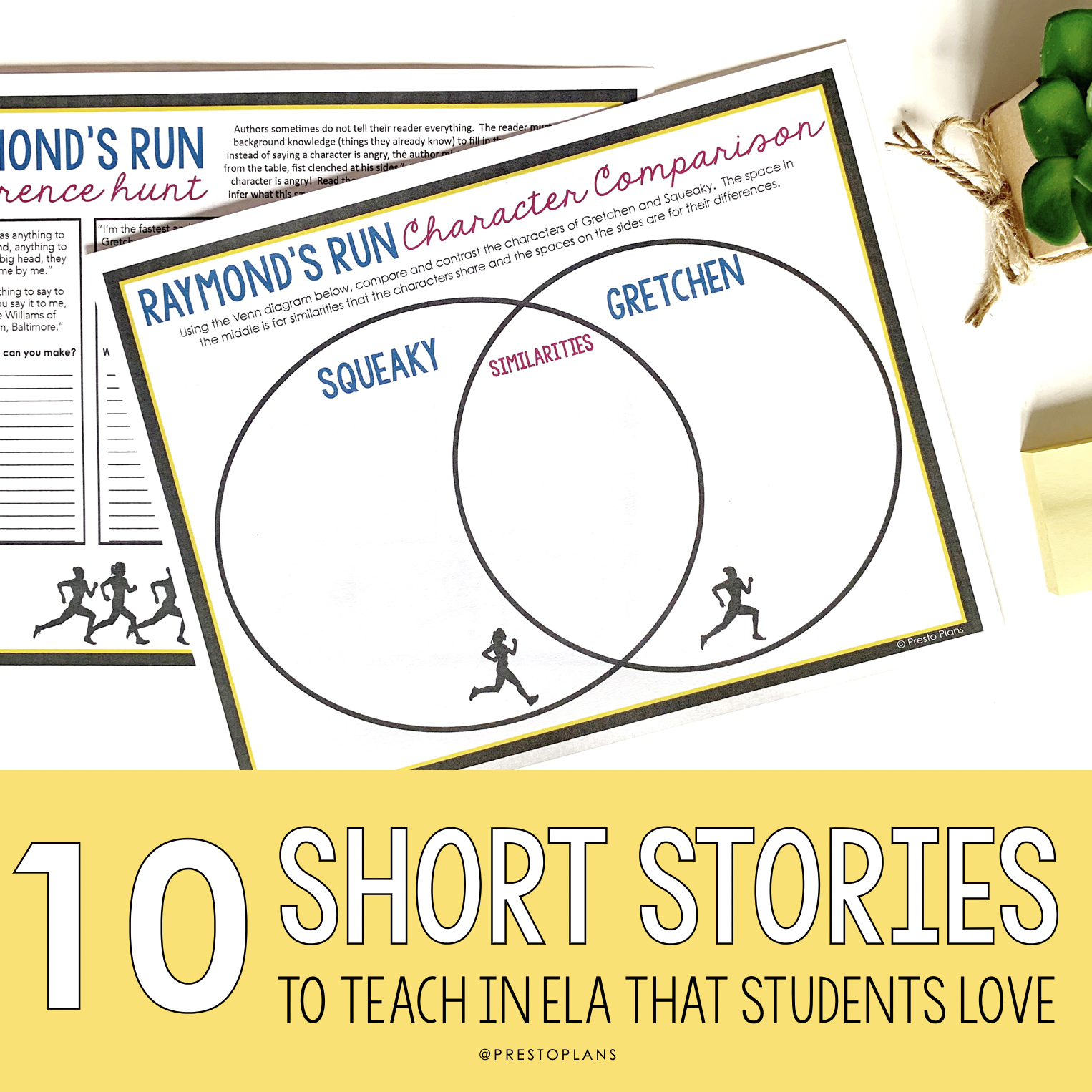
10 Short Stories to Teach in ELA With Teaching Ideas
Are you looking for ideas of which short story (or stories) to teach in your ELA classroom? Here’s a list of 10 short stories that your ELA students will love, as well as my best tips for teaching each one!
1. The Lottery By Shirley Jackson
WHAT’S THE STORY ABOUT?:
“The Lottery” tells the story of a small town’s annual tradition where one citizen is selected by chance. Though winning a lottery seems like the ultimate prize, it doesn’t take long for the reader to realize that perhaps being the person who selects the paper with the black circle on it is far from a desirable outcome.
IMPORTANT DEVICES OR STORY ELEMENTS:
The primary devices that I like to focus on with “The Lottery“ are foreshadowing and symbolism. Jackson skillfully employs these devices by giving hints throughout the plot about the shocking ending and giving objects and character names symbolic meaning. I like to get students to be symbolism and foreshadowing detectives and work in small groups to find examples of both devices!
CREATIVE ASSIGNMENT IDEAS:
Exploring a Tradition: Have students examine a tradition of their choice and do some research to discover its origins and significance. They can decide if this is a tradition that should be continued, and they will justify their response. Then, have students prepare a multimedia project that can be shared in presentation, podcast, or blog post format.
Newspaper Project: Extra! Extra! Read all about it! Students will imagine that they are a journalist living in the town where “The Lottery” takes place. They will publish a newspaper during the time of the plot. Their goal is to give as much information to your readers from the story as possible. They can write for sections of the paper like the headline, obituary, special interview, or letter to the editor.
2. The Landlady by Roald Dahl
WHAT’S THE STORY ABOUT?:
A businessman named Billy Weaver travels to Bath, England. While looking for a place to stay, he feels compelled to go to a local bed and breakfast run by a landlady. It isn’t long before we realize that the landlady is not as sweet and innocent as she seems.
IMPORTANT DEVICES OR STORY ELEMENTS:
The primary device that I like to focus on with “The Landlady” is characterization, particularly through the character of the landlady herself, who we slowly realize is not who she initially seems to be. The author develops her peculiarity over the course of the story. Foreshadowing is also an important element of the story because the story requires us to infer the ending. I like to get students to go back and look at the clues which help them come to their conclusions.
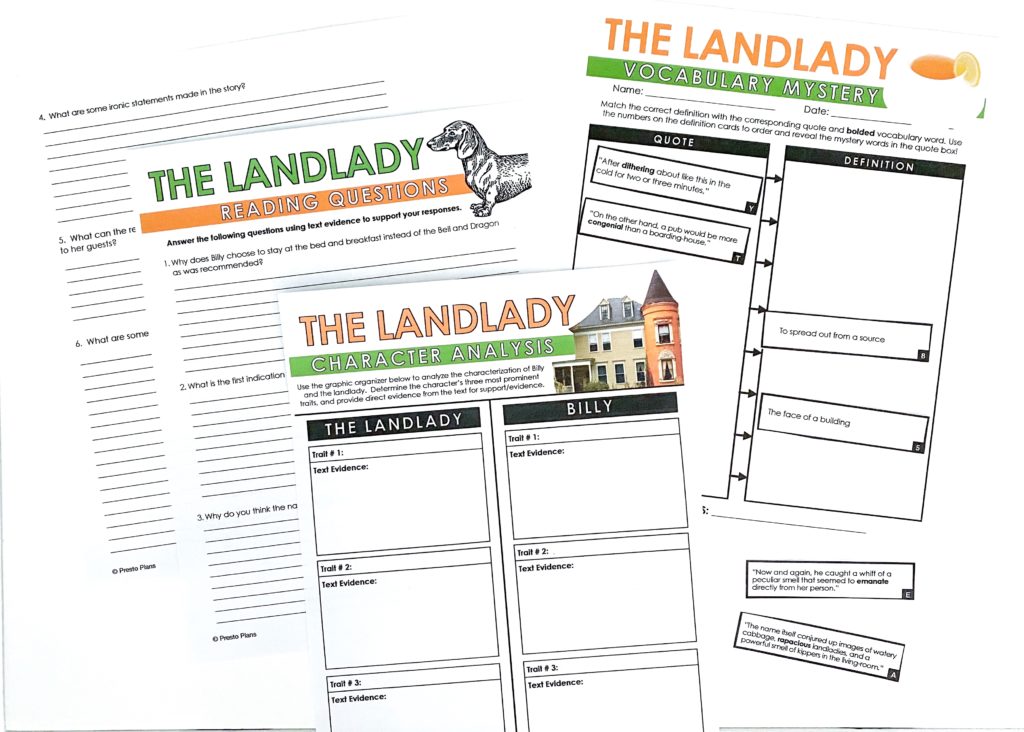
CREATIVE ASSIGNMENT IDEAS:
Vocabulary Game: Because there’s lots of challenging vocabulary in Dahl’s story, I like to do a fun vocabulary game with students after they finish reading it. Students are given cards with quotes from the story and a corresponding letter. They must match the bolded vocabulary words with the corresponding definition cards, which include a number that will help them order the letters to reveal a mystery word.
Bath Telegraph: Students will write a headline article and a drawing reflecting what happens to Billy after the story ends. Have them brainstorm the who, what, where, when, why, and how, and find a couple of relevant quotations to use. Then, get students to write a good copy where they include a drawn photograph to accompany the article.
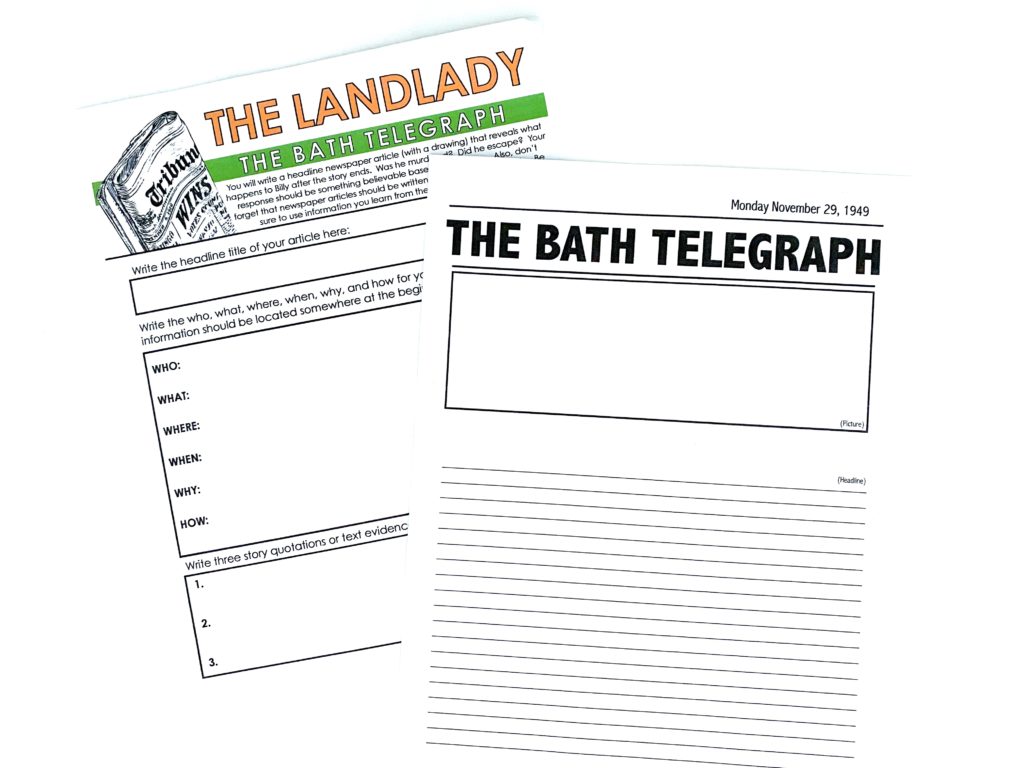
3. A Sound of Thunder by Ray Bradbury
WHAT’S THE STORY ABOUT?:
It’s the year 2055, and the time traveling company Time Safari Inc. has made it possible for rich adventurists to go back in time and hunt extinct species (like dinosaurs). Since even the smallest change in the past can have a dramatic impact on the present, the time-traveling protagonist, Eckels, has to be very careful.
IMPORTANT DEVICES OR STORY ELEMENTS:
In “A Sound of Thunder,” Bradbury uses a lot of figurative language in his descriptions. I like to get students to pay particular attention to the use of metaphor, simile, and personification. Foreshadowing is another important element of the story—namely, the foreshadowing of changes made in the past affecting the future. Also, mood and tone are important. Bradbury keeps you on the edge of your seat with the emotionally tense and suspenseful mood. The tone is serious, cautionary, and dark, warning the reader of the consequences of even the slightest actions.
CREATIVE ASSIGNMENT IDEAS:
EB Comics: There’s a comic book version of the story that works great for helping students (especially those who struggle a bit with reading) to better visualize the story. Check it out by clicking here.
The Butterfly Effect: You can also do something with the idea of the butterfly effect, which comes up in the story. Have students watch this video about the concept. Then, ask students discussion questions like “How could your actions today affect your future?” and “What is something that has happened in the past that has affected how your life is today?”
Descriptive Writing: I also do a descriptive writing activity where I get students to examine Bradbury’s striking description of the T-Rex and reflect on what makes this description so powerful. Then, I have them write their own piece of descriptive writing. I give them ideas for what they can write about (i.e. a waiting room, a messy locker, a closet, a sports object), a graphic organizer that helps them organize their ideas, and then I get them to write a paragraph in a similar format as Bradbury’s description of the dinosaur.
4. The Most Dangerous Game by Richard Connell
WHAT’S THE STORY ABOUT?:
This story is about a big-game hunter who falls off a boat and ends up washed up on an isolated Caribbean island, where he finds himself in the terrifying presence of a Cossack aristocrat who has a particular interest in hunting humans instead of animals.
IMPORTANT DEVICES OR STORY ELEMENTS:
I like to spend a bit of time up front covering some of the historical context of Cossacks during the Russian Revolution and trench warfare during WW1. I also explain features of Gothic and Adventure Literature genres so that they can look for those elements in the story. “The Most Dangerous Game” uses symbolism with the jungle, The Chateau, and the color red, and the author builds a lot of suspense, so I like to touch on these elements as well.
CREATIVE ASSIGNMENT IDEAS:
Play a game!: After reading, I have students play a “dangerous game” board game that features different aspects of the story like being attacked by insects, having to jump off a cliff, and making it to the chateau. Then I get students to respond to reading comprehension, vocabulary, and analysis questions.
Ship Trap Island: Setting is another important element in the story, but it can be hard to follow because there are so many moving parts. To help them visualize it, I get students to build a map of Ship Trap Island by pulling quotes from each of the locations mentioned in the story.
General Zaroff’s Hunting Log: Finally, I also have students write hunting log entries from the perspective of General Zaroff, the Cossack hunter, after four different key moments in the short story.
5. Thank You, M’am by Langston Hughes
WHAT’S THE STORY ABOUT?:
A boy named Roger tries to steal the purse of a woman who is walking home alone at night. When the boy is unable to get away with his crime, he expects punishment. Instead, Mrs. Luella Bates Washington Jones shows him a level of kindness he will never forget.
IMPORTANT DEVICES OR STORY ELEMENTS:
One of my primary focuses is always on the theme of “Thank You, M’am,” which is the power of love and trust, as demonstrated by Mrs. Jones who, instead of punishing Roger, goes out of her way to take care of him at her home. The conflict of the story—whether Roger will run away or stay and change his behavior—is worth discussing, and I like to also talk about characterization through Mrs. Jones’ remarkable character.
CREATIVE ASSIGNMENT IDEAS:
Letter to Mrs. Jones: Have students imagine that they are Roger and that it’s been 10 years since the encounter that occurs in this short story. Get them to write a thank-you letter to Mrs. Luella Bates Washington Jones to tell her what they did after they left her home, what they have been doing since the encounter, and what impact her actions and words have had on them using evidence from the text.
6. The Leap by Louise Erdrich
WHAT’S THE STORY ABOUT?:
A woman tells the story of her elderly mother, Anna, who was once a trapeze artist. The unnamed narrator describes three instances for which she feels her existence is indebted to her mother, who sacrificed so much on her behalf.
IMPORTANT DEVICES OR STORY ELEMENTS:
The internal conflict and theme are interconnected in “The Leap,” and I focus on these first. The conflict is Person vs. Self. Anna is forced to make tough decisions, like risking her own life to save her daughter. This, in turn, serves to illustrate the theme of overcoming fears and taking risks. The author also skillfully uses figurative language in the story, so I have students pay particular attention to metaphor, simile, personification, and onomatopoeia.
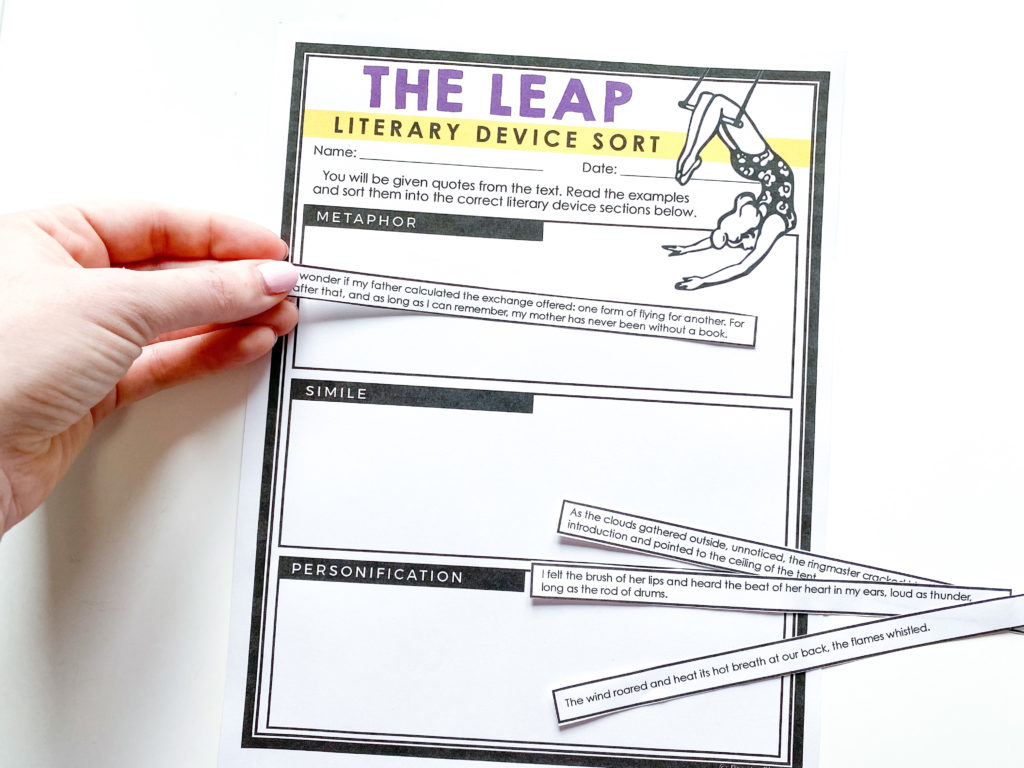
CREATIVE ASSIGNMENT IDEAS:
Oral Storytelling: Louise Eldrich is an enrolled member of the Turtle Mountain Band of Chippewa, which is a First Nations Anishinaabe tribe. One thing you can do with students is to have them learn about the importance of the tradition of oral storytelling for indigenous communities like this one.
Article about Anna Avalon: Have students write an article about Anna’s life using facts they find from the story. Get them to include how she might have felt throughout all of these events and reflect on how she was able to overcome so many tragedies through her courage and strength.
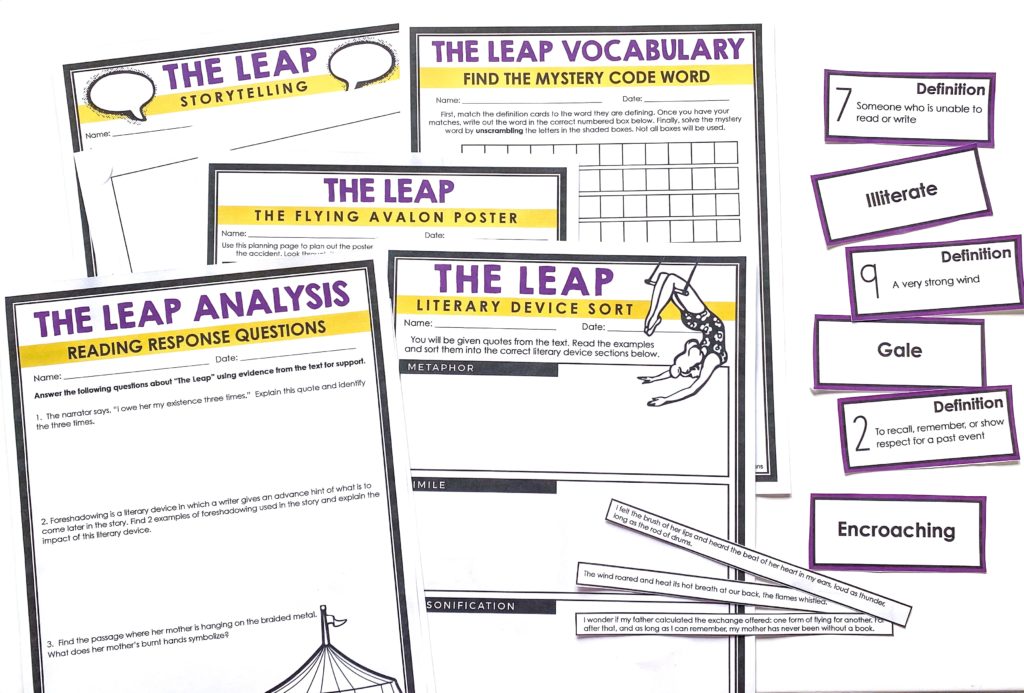
Flying Avalon Poster: Have students make a poster for Flying Avalon, the name of her mother’s trapeze act, after doing some pre-planning based on questions like “What kinds of costumes will your performers wear?”, “What slogan could you use to draw your audience into your show?,” and “What other acts will you include?”
7. Lather and Nothing Else by Hernando Tellez
WHAT’S THE STORY ABOUT?:
A barber, who is secretly part of a rebellion against the government, is tasked with shaving the face of an opposing leader who walks into his shop for a clean shave. With his enemy, Captain Torres, sitting in his chair and his sharpened razor against his throat, the barber has a decision to make.
IMPORTANT DEVICES OR STORY ELEMENTS:
The main things I focus on for this story is the conflict of “Lather and Nothing Else” (which is person vs. self) and the theme of the story, which is the importance of thinking about the potential consequences of your actions. I also draw students’ attention to the symbolism of the razor. After they have read the story, I have them go back and look at how it is described and get them to consider its thematic role in the story.
CREATIVE ASSIGNMENT IDEAS:
Just Lather, That’s All: Hernando Tellez’s story, translated from Spanish, has also been translated as “Just Lather, That’s All.” Get students to write what they think is significant about the title (either version) before coming up with their own competing title that they think could work for the story as well. In short stories, especially those as short as this one, titles serve an important purpose. Have students defend the strengths of their alternative titles in a short, persuasive paragraph, and encourage them to cite supporting evidence from the text.
8. Raymond’s Run by Toni Cade Bambara
WHAT’S THE STORY ABOUT?:
Hazel Parker, whose nickname is Squeaky, is a talented runner who is training for a race alongside her brother, Raymond, who has an intellectual disability. Squeaky competes against her rival, Gretchen, and learns more about herself and her brother in the process.
IMPORTANT DEVICES OR STORY ELEMENTS:
Characterization is one of the main elements I focus on with “Raymond’s Run.” Squeaky comes to realize that she and Gretchen have more in common than she thought. I also focus on the gender stereotypes and familiar relations in the story, and draw students’ attention to the setting of the story, which is Harlem, New York City, in the 1960s, what’s referred to as the concrete jungle, as well as Squeaky’s desire to escape the urban setting for a more rural one “because even grass in the city feels hard as the sidewalk.”
CREATIVE ASSIGNMENT IDEAS:
Squeaky’s Speech: Have students imagine that Squeaky needs to give an acceptance speech after she receives her trophy. Have them write that speech using her voice. Note that it’s also important to take into account how Squeaky’s perspective has shifted in the story. You can get them to share their speeches with the class.
RACE Strategy: With the plot being related to a race, it’s the perfect time to introduce students to the constructed responses race strategy! Have students use the strategy to answer questions like, “How does Squeaky feel about her responsibility in the family.” Have them (R)estate the question, (A)nswer the question, (C)ite evidence, and then Explain the connection.
Inference Hunt: Authors don’t always tell us everything directly. It’s often up to us, as the reader, to infer certain information. Give students quotes from the story and have them make inferences about what’s happening in those moments in the story.
9. Lamb to the Slaughter by Roald Dahl
WHAT’S THE STORY ABOUT?:
Mary Maloney, a loving and devoted housewife, receives the terrible and unexpected news that her husband is leaving her. Mary, in her incredible shock, enters a trance and commits an unspeakable act that no one sees coming.
IMPORTANT DEVICES OR STORY ELEMENTS:
“Lamb to the Slaughter” is a perfect example of dramatic irony. The reader knows exactly what Mary is up to, while none of the other characters do. I also pay attention to Mary’s dynamic character. Although she seems like a stereotypical housewife, we come away from the story with a totally different view of Mary. On a connected note, I cover the theme as well—namely, the importance of individual identity and the question of her guilt in the story. This story works really well with reader’s theater as well. I will often have students take on specific roles and read it aloud with costumes and props.
CREATIVE ASSIGNMENT IDEAS:
Mary’s Diary: Have students write three diary entries from the perspective of Mary Maloney. The first entry should be before the murder. The second one should be after the murder. The third should be after she gets away with the murder.
Police Report: Get students to fill out a police report for Jack Noonan, who comes to investigate the Mahoney residence in the story. Have them include things like a description of the scene, evidence collected, and witness testimony.
10. The Monkey’s Paw by W.W. Jacobs
WHAT’S THE STORY ABOUT?:
Sergeant-Major Morris arrives at the White family residence with a monkey’s paw that has the power to grant three wishes. Through a series of unfortunate events, the family learns that maybe you really should be careful what you wish for!
IMPORTANT DEVICES OR STORY ELEMENTS:
The main thing I like to focus on is suspense, which is so central to this story, where the family’s wishes keep turning against them. The setting is also an important aspect of “The Monkey’s Paw,” particularly through the contrast between the comfortable, warm, and safe family home and the dark and stormy night outside it. Symbolism is another device that’s used a lot in the story (i.e. the monkey’s paw itself, chess, and the number 3).
CREATIVE ASSIGNMENT IDEAS:
It says, I say, and so: For each character, get students to find a passage in the story that reveals something about their personality (It Says). Then, have them explain what personality trait you think is revealed in this passage (I Say). Finally, explain why/how you think this character trait is revealed (And so).
Alternate Ending: Jacobs’ story ends on a cliffhanger so I like to get students to write an alternate ending that begins with the last line and continues the story in a way that satisfies them.
There you have it! I hope you found these suggestions of short stories and teaching tips useful for your ELA classroom. If you’re interested in checking out more reading-related posts and resources, click here.










Search the blog for what you are teaching
GIVEAWAYS
sent straight to your inbox!
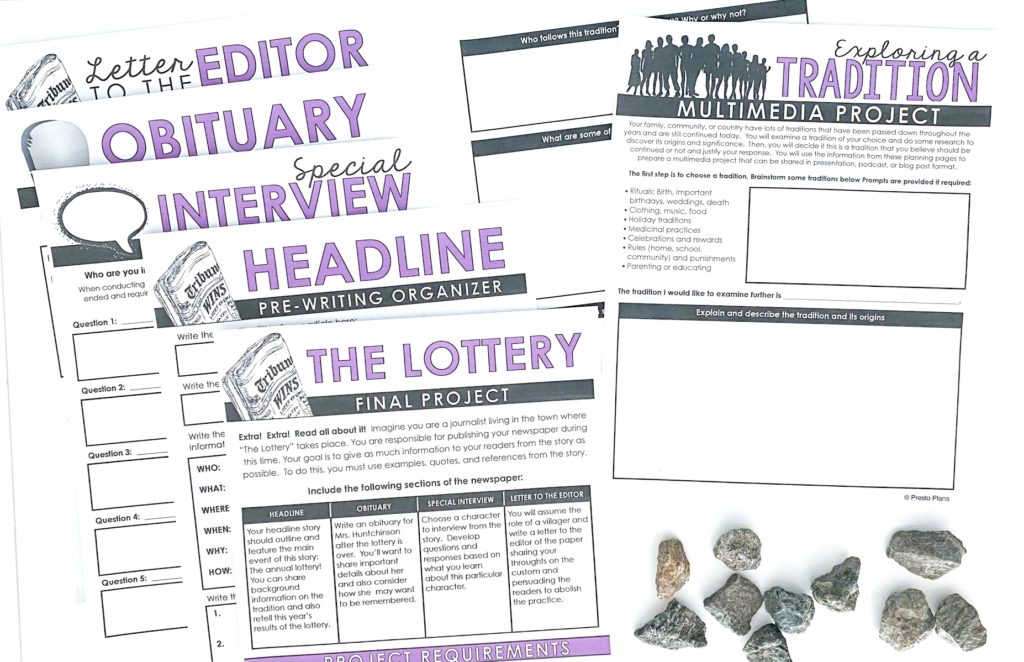
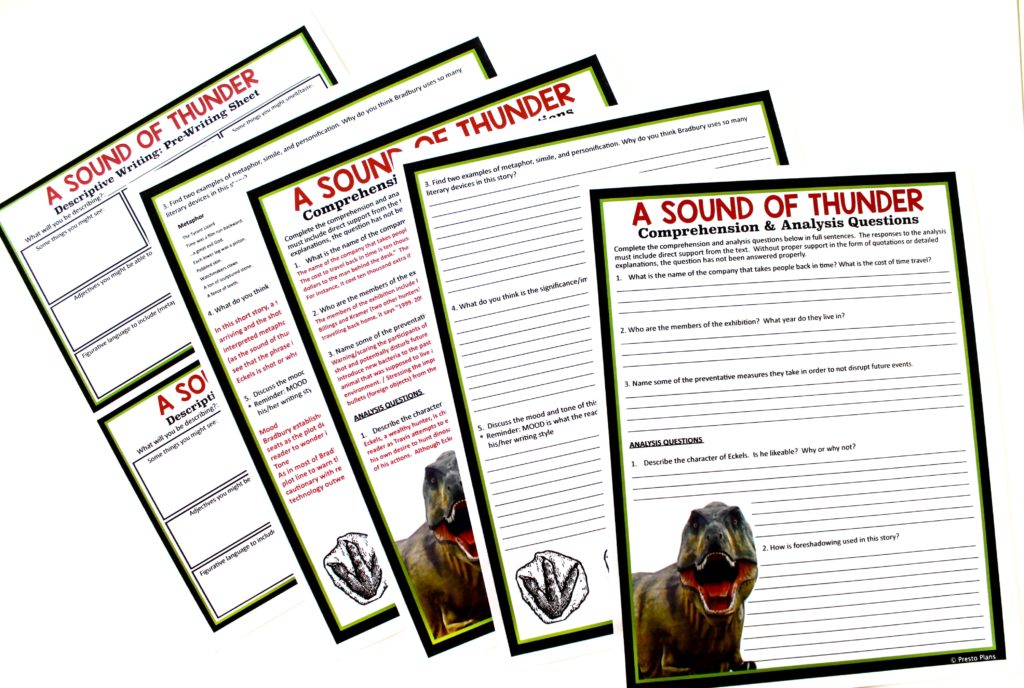
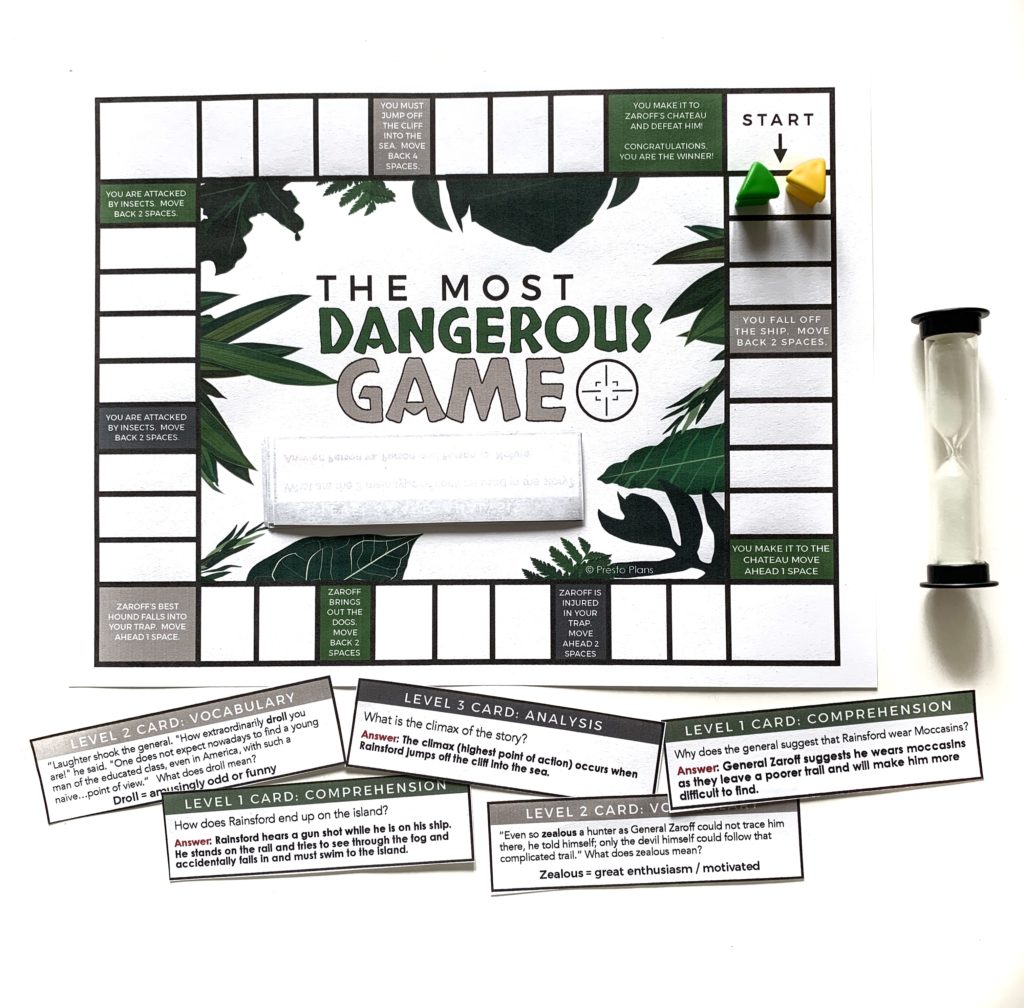
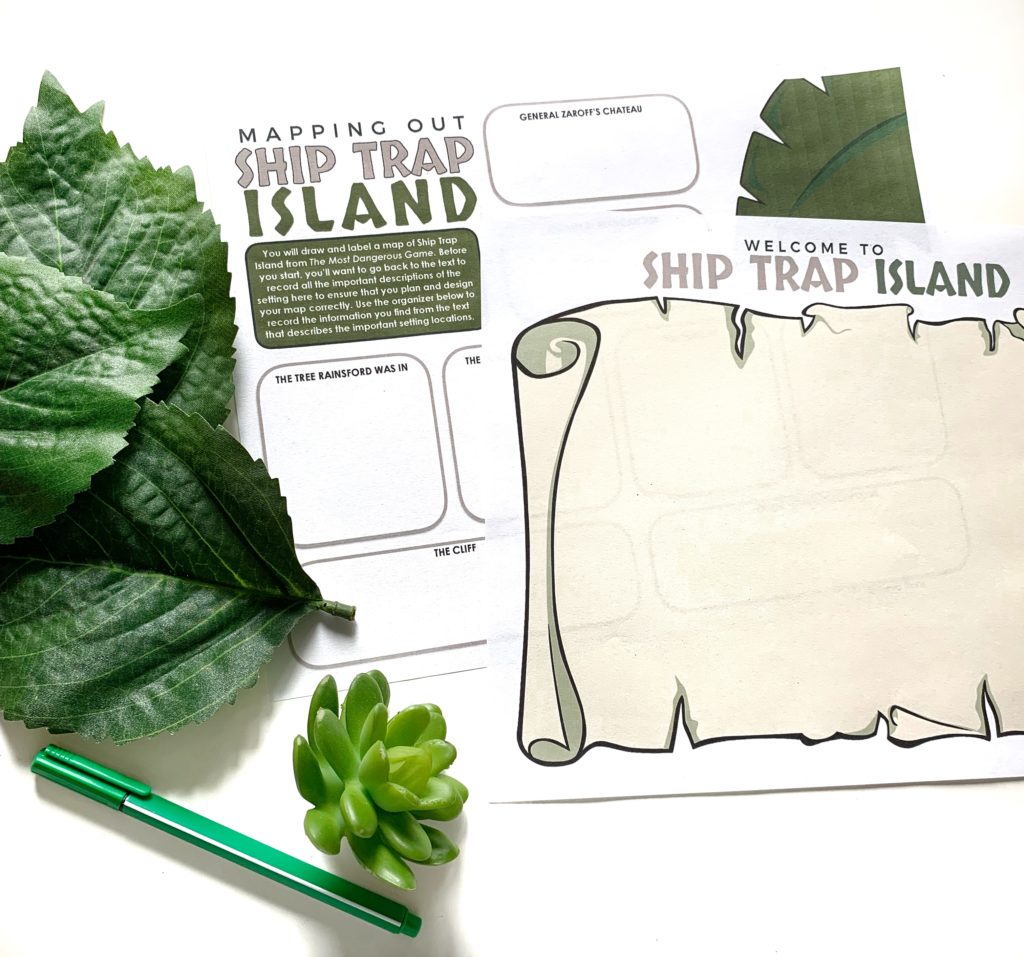
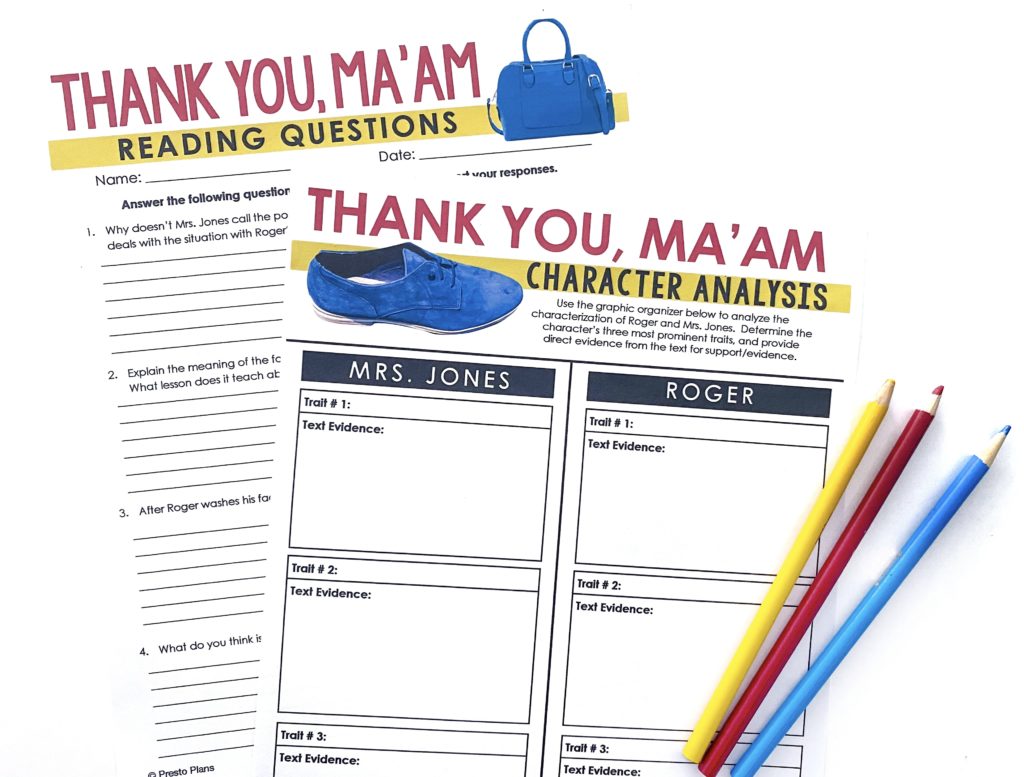
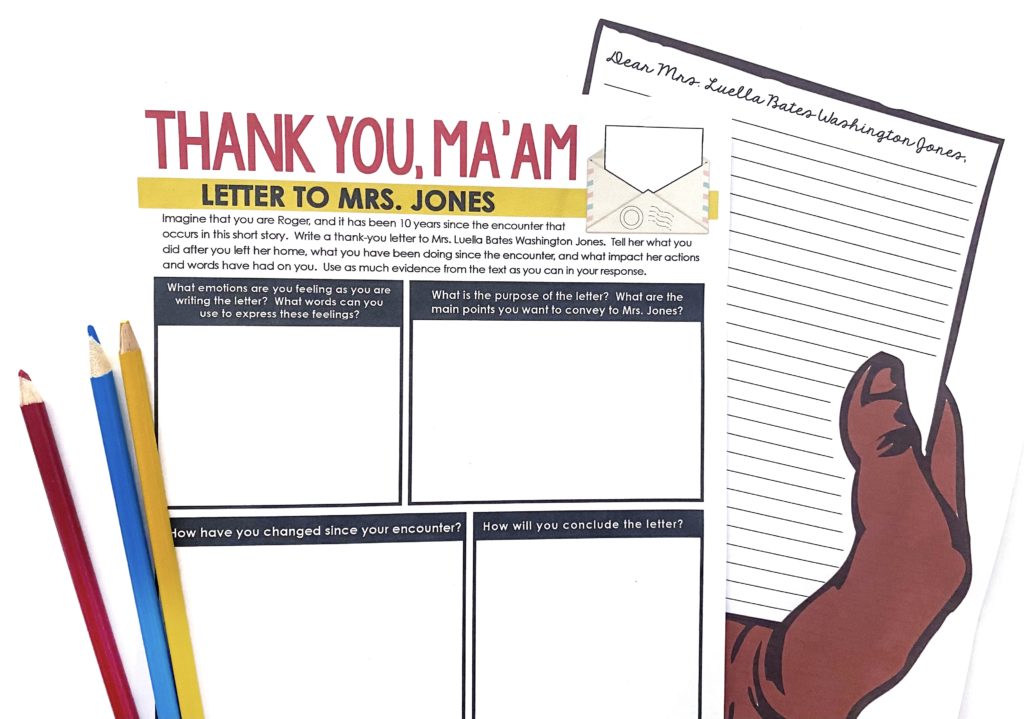
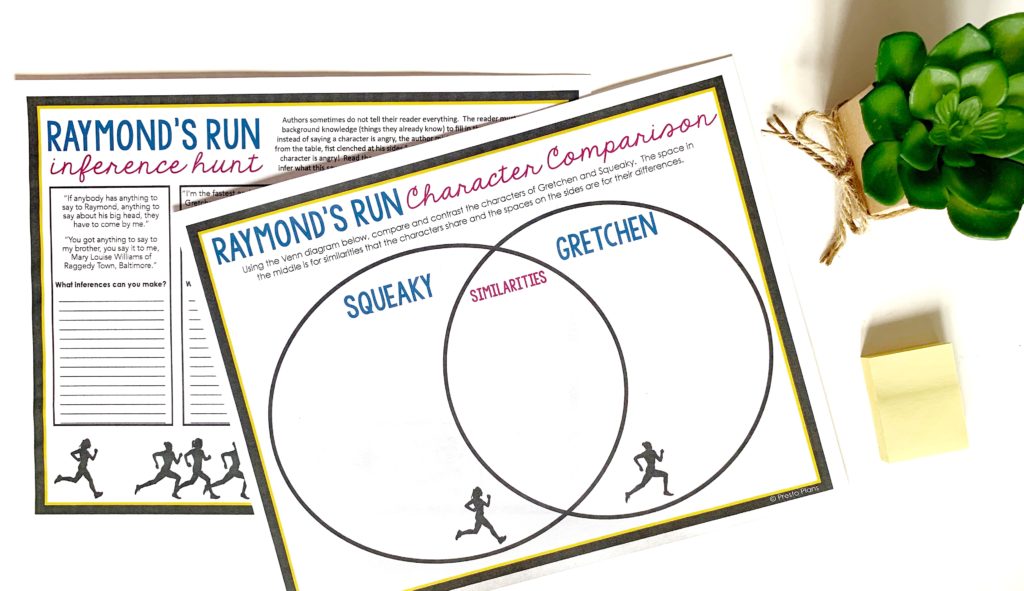
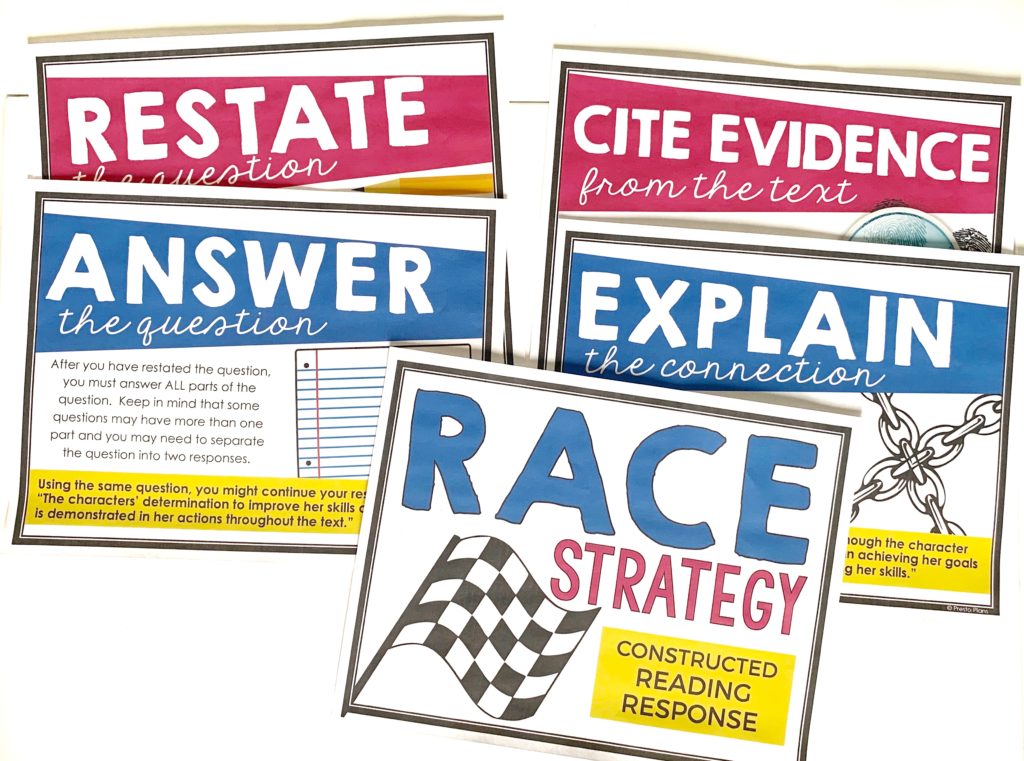
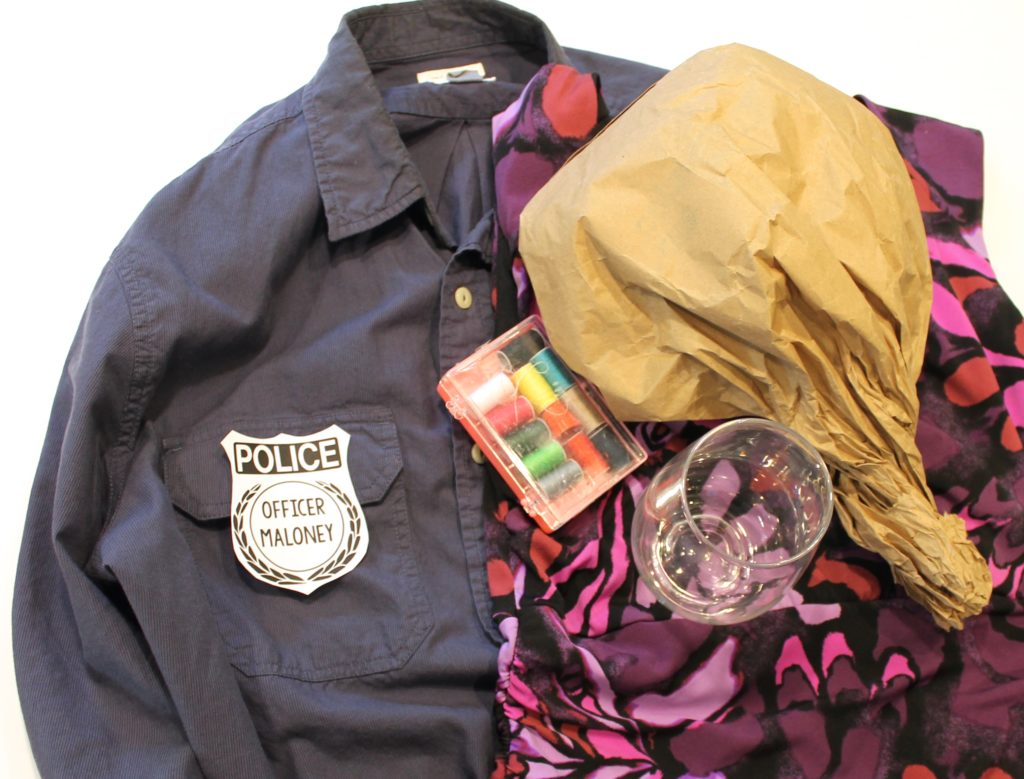
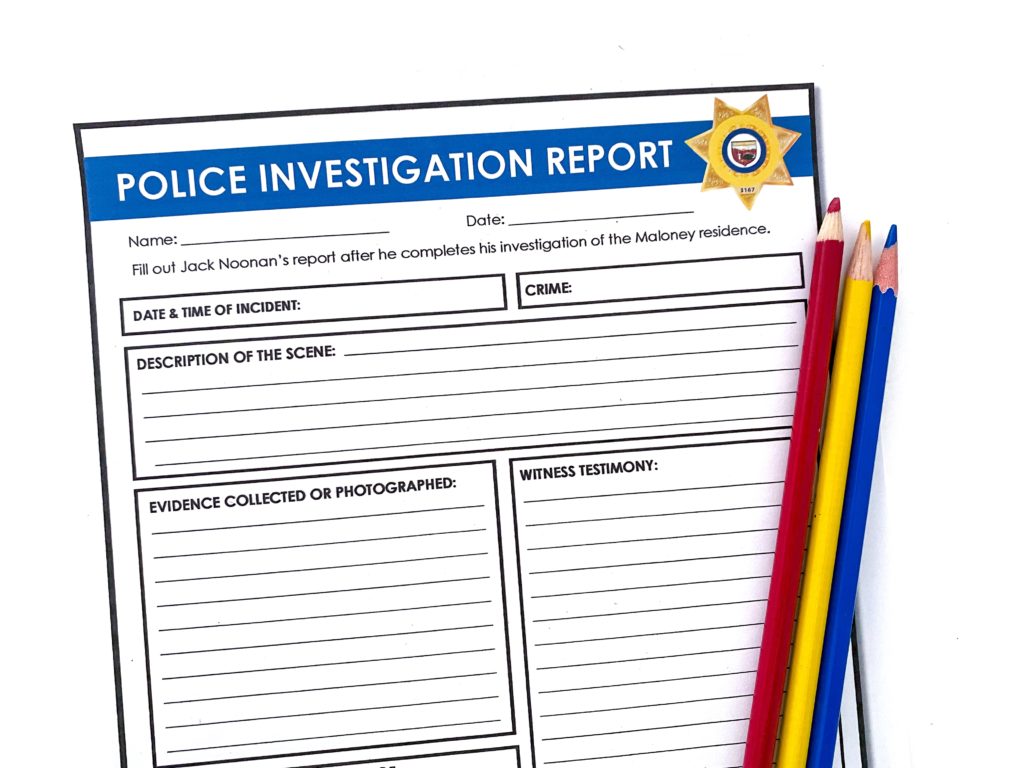
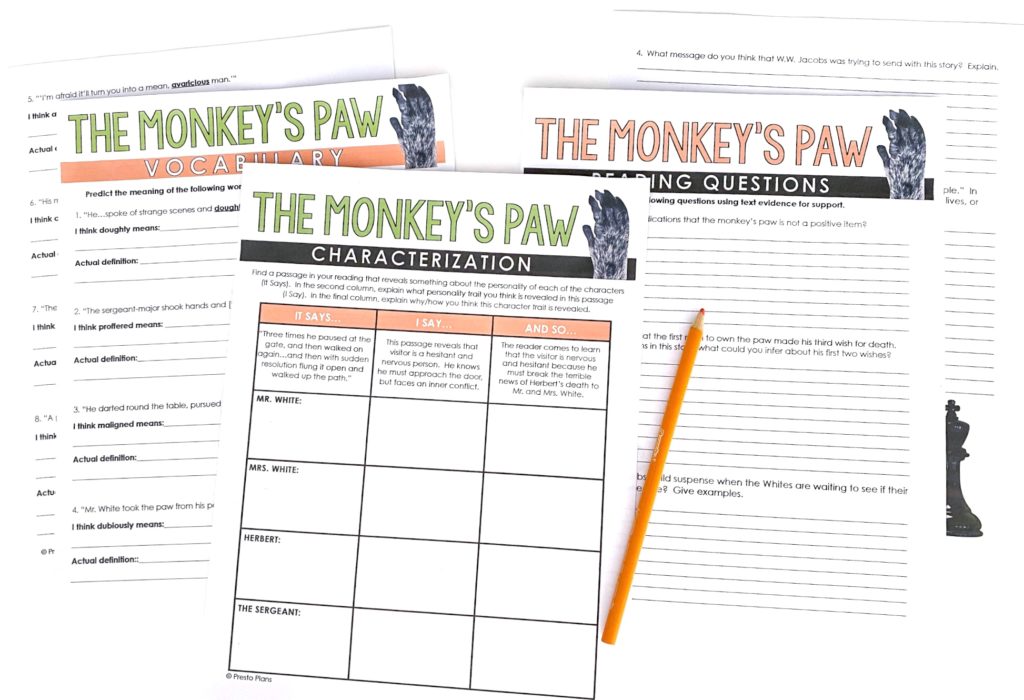
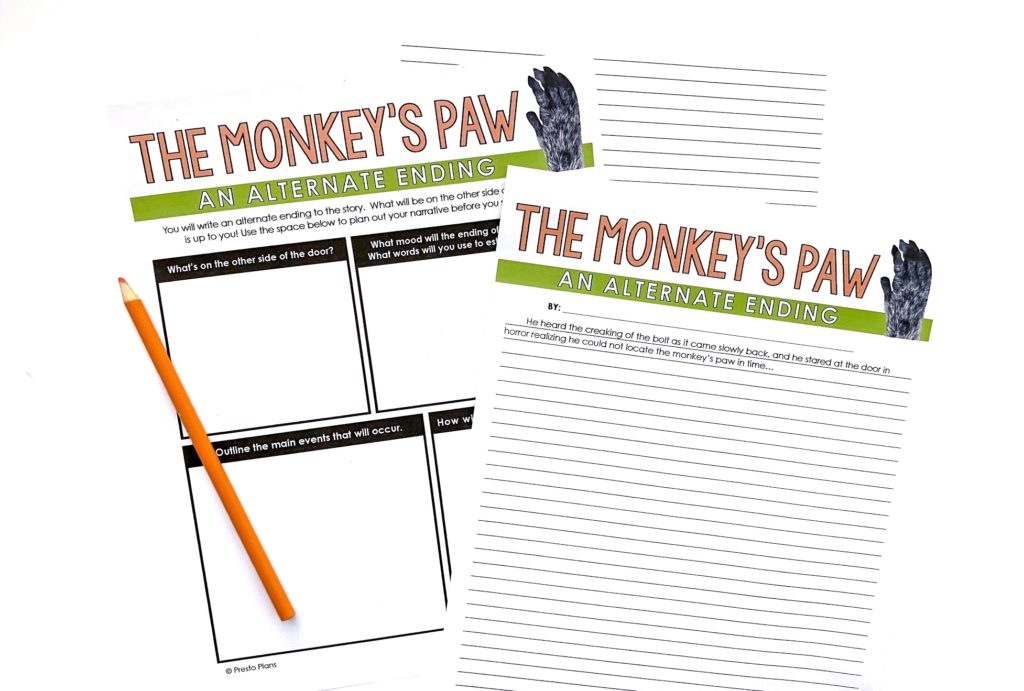
share this post